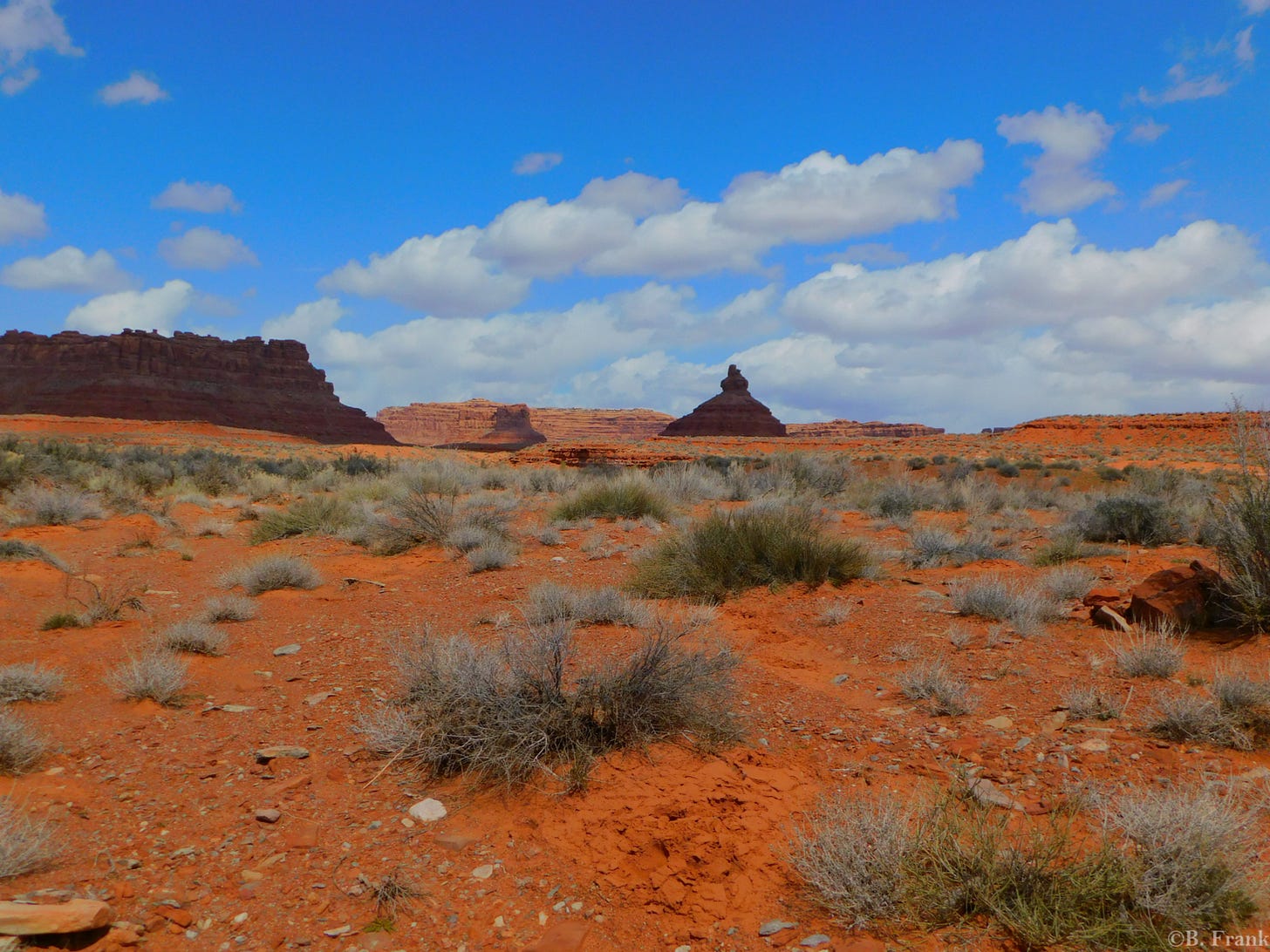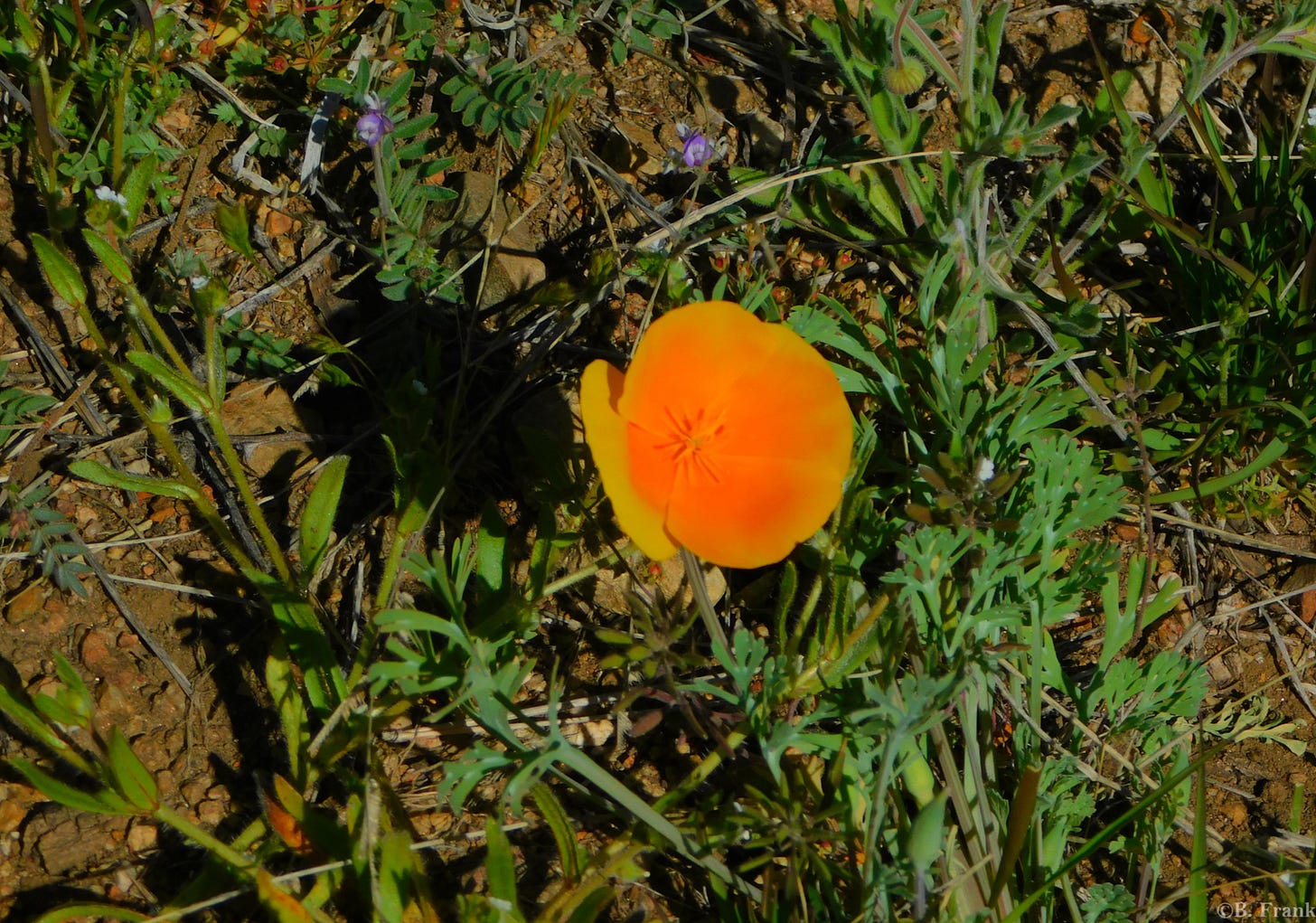Engineering Paradise —
Somewhere Betwixt Devils & the Deep, Part 3
“I then became the first rock in history to be overcome with feeling, a serene aching aimed at nothing in particular, only a cobalt sky with no edge but winter’s cold and a river beside us that shook out its light in full drizzle, a river rimmed with ice and a band of rare mammals whose own biology could have lost them to the world.”— excerpt from the Prologue of Ellen Meloy’s book, Eating Stone [Pantheon Books; 2005]
We have all come from some place, each bound to become something else. So too with cliff and rock. Sand turns to silt. Mountains becoming deltas. With enough time, deep ocean floors will again be uplifted towards the sky, only to drift in currents downward towards renewal.
An essay of eroding stone…
…to build oases…
…that host flocks of life…
…and animals “…whose own biology could have lost them to the world,” as Ellen Meloy wrote of the Bighorn sheep she had watched through the seasons, and saluted in Eating Stone.
Eroding drylands are transitional links between mountains and oceans; recycling minerals, filtering pollutants, redistributing soils, and—powered by water and wind—renewing a myriad of habitats along the way. Though most scientific studies address erosion as a threat to human economic and social interests, and despite humans’ engineered attempts to slow or stop its processes, all organisms harvest the fruits of eroding stone, each life in turn contributing to a process known as bioerosion, as shown in the following table from a review published in the journal Scientific Letters [(2018) 21: 422-428]:

Missing from the above table is a direct reference to a species that relies upon, and alters all it touches—abrading, grinding, boring, burrowing, fracturing, corroding—with ever more disastrous side effects. As each new generation of this species realizes its physical limits and seeks to overcome them, add to this list another one of engineered aridification, augmentation, deferral, defoliation, extinction, mitigation, and modification—each action imposing a range of unforeseeable consequences on other species. The above review addresses this species’ effects and edifices as follows, “We present a unifying definition and advance a conceptual framework for (a) examining the effects of bioerosion on natural systems and human infrastructure and (b) identifying and predicting the effects of anthropogenic factors (e. g. climate change, eutrophication) on bioerosion.” Some of these “anthropogenic factors” are reflected in recent data showing that:
2023 was earth’s hottest year ever recorded by humans,
“…when every day was at least 1C warmer than the 1850-1900 pre-industrial record.” [The Guardian, January 9, 2024]
Air, light, and noise pollution are altering migrations and survival of insects, birds, terrestrial and marine life, and ecosystems.
“Atmospheric deposition of nitrogen and sulfur resulting from air pollution is a major stressor to natural ecosystems, often leading to acidification and eutrophication…” [US EPA, January 2023];
“Excessive or misdirected artificial light at night (ALAN) produces light pollution that influences several aspects of the biology and ecology of birds,…” [Nature, Scientific Reports, Volume 8, Article number: 3261 (2018)];
Runoff of excess fertilizers and untreated sewage is feeding a nutrient cycle that is depleting riparian and coastal ecosystems worldwide.
“This oxygen loss, or deoxygenation, is one of the most important changes occurring in an ocean increasingly modified by human activities that have raised temperatures, CO2 levels, and nutrient inputs and have altered the abundances and distributions of marine species.” [Science, Volume 359, Issue 6371, January 5, 2024]
Discarded plastics and other flotsam are becoming refuges of last resort for former denizens of bleached out coral reefs and other natural features, as we all ingest the detritus.
Intentionally or not, “human infrastructure” is replacing “natural systems” at an accelerating rate, far outpacing humans’ efforts to engineer paths through the self-referential Anthropocene Epoch, tempting a conclusion to this series that features apocalyptic scenes of desperate believers and non-believers jockeying for positions on life-boats that may, or may not, escape from “…betwixt the devill and the deep sea,” as the 17th century Scottish soldier Robert Monro once wrote in his reminiscence of a battle over territorial control.
Instead—up next, we’ll explore some burgeoning communities of life just under our noses, if we kneel down and probe a bit, in: Renewing an Oasis, the Fungal Way—Somewhere Betwixt Devils & the Deep, Part 4. Until then, let’s help life thrive on our beautiful home planet. -B.
For some deep perspective on a dryland river’s past and future realities, from a knowledgeable and perceptive writer/storyteller, here is George Sibley’s Romancing the River: Thinking Like a River, and his publication Sibley’s Rivers.















Thanks, Laura- I agree about the beauty and passion of Ellen Meloy’s writings about the drylands and beyond, and am glad to have her words available still.
Ellen Meloy is such a great match for your beautiful post, B (which should be read/viewed on a larger screen for full photographic effect!). Meloy, whose own biology lost her to our world way too soon...